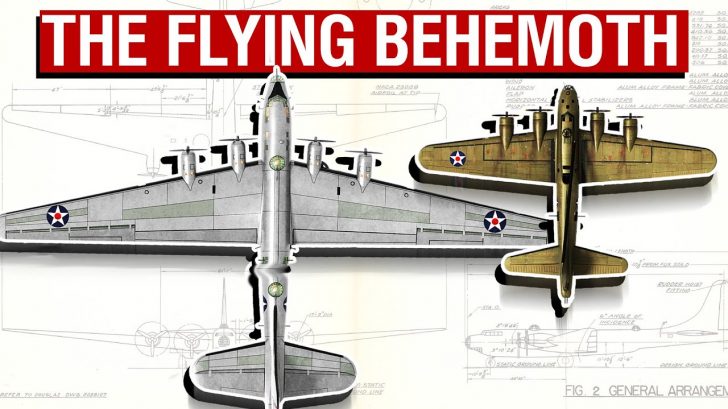We’ve all seen our fair share of experimental aircraft, such as the X-36 tailless fighter, the NASA AD-1 oblique wing plane, and the Bell X-1. These planes are all unique in some sort of way, but none of them are known to be as massive as the Douglas XB-19.
XBLR (Experimental Bomber Long Range)
Developed by Douglas Aircraft Company during the 1940s, the XB-19 was one of the largest planes ever built at the time. It was first proposed in 1935 when the USAAC was in search of a heavy bomber that could stay at high altitudes and fly over long distances.
Although the aircraft did not see active service during WWII, it was still designed to carry out long-range bombing missions and was considered to be an important milestone in the development of military aviation.
Bigger Than Anything Else
It was enormous, even for a heavy bomber at the time. The XB-19 had a wingspan of over 212 ft and measured 132 ft in length. Four Pratt & Whitney R-3350-5 engines were fitted into the aircraft, each capable of producing 2,000 hp. As a result, the heavy bomber was able to reach a top speed of about 230 mph at a range of over 7,000 mi.
But even then, it was a bit challenging to design.

Too Complicated
One of its many design challenges was creating an aircraft that could support the weight of its huge engines and the fuel that comes along with it. Douglas engineers addressed this issue by developing a “wing box” design that incorporated a series of ribs and braces to distribute the plane’s weight evenly.
The cockpit, which was expected to accommodate a crew of up to 18 people, also proved to be a challenging task. Their solution was to design a multi-level cockpit that spanned the entire width of the plane. It also had a glass nose and a series of observation windows that provided excellent visibility to the whole crew.
Many Flaws
Impressive specifications aside, the aircraft was still heavily flawed. Its issues with stability, due to its enormous size and weight, made it difficult to control during takeoffs and landings. The plane was also vulnerable to strong winds and turbulence.
In addition, the high cost of production and the complexity of its design would have required plenty of maintenance and manpower. As a result, they would not be produced in large numbers, and only two prototypes were built.

Flying Laboratory
Even though it wasn’t serviceable, the XB-19 still did its job well as an experimental aircraft. As a “Flying Laboratory”, the XB-19 had completed one of the most extensive test programs in history, serving as a testbed for several new technologies that paved the way for the development of the B-29.
It made its last flight in August of 1946 when it was placed in storage. Three years later, the XB-19 would be scrapped, with only two of its huge tires saved today. The first one can be found at the Hill Aerospace Museum in Utah, and the other at the National Museum of the United States Air Force in Ohio.



